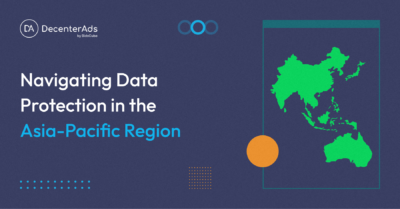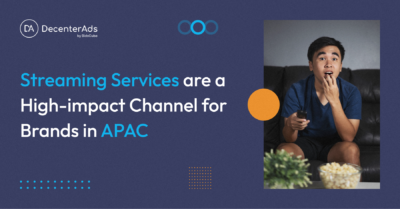Guide on Demand Path Optimization (DPO)
Share
17 January 2024

In 2016, the Demand-Path Optimization (DPO) concept coincided with the creation of Supply-Path Optimization (SPO) by the Advertiser Technology Group at AppNexus. Emerging market trends suggest a growing interest in DPO as publishers seek to enhance ad revenue. Regardless of the executor of DPO, the overarching objective remains consistent: to facilitate advertisers in purchasing a publisher’s inventory with greater efficiency, thereby improving business performance and upholding a positive user experience. To streamline the DPO process, the IAB introduced Buyers.json, a mechanism designed to identify buyers of advertisements.
What is Demand-Path Optimization (DPO)?
Demand Path Optimization (DPO) is a digital advertising strategy that streamlines the connection between buyers and premium inventory through a transparent bidding process. By minimizing ad tech fees and fostering direct relationships, DPO aims to boost publisher revenue. It emphasizes supply chain efficiency, aligning with industry efforts to preserve working media value. DPO involves strategic buyer investments in transparent partnerships, allowing publishers to capture more spending and build stronger relationships. With the deprecation of third-party cookies, the focus on reducing the gap between buyers and sellers has intensified, making collaboration a top priority. DPO identifies and optimizes the most efficient paths for connecting with buyers, ensuring profitability and efficiency for both parties.
The primary objective of demand-path optimization is to ascertain the unique value each buyer contributes to the publisher and facilitate advertisers in discovering the most efficient and effective route to their inventory. The DPO process unfolds in four key stages: data gathering, analysis, planning, and execution.
Demand path optimization holds considerable significance as it serves as a pivotal strategy to elevate the efficiency and effectiveness of the intricate connection between publishers and advertisers within the digital advertising landscape. By meticulously streamlining the pathway for demand, DPO aims to ensure optimal performance and prioritizes transparency. This strategic approach is crucial for refining and enhancing the overall digital advertising, fostering a more seamless and mutually beneficial collaboration between partners.
How Is DPO Different From SPO?
DPO serves as the inverse counterpart to SPO. Yet, both methods share a common objective – to forge the optimal connection between buyers and sellers while enhancing transparency in the media supply chain. We have previously written about SPO in more detail on our blog.
While SPO endeavors to truncate the path and minimize fees, DPO takes a distinct approach, aiming to sell impressions through the most effective demand paths. Although the shortest route occasionally aligns with the best course, it is not the sole determinant. In DPO, the emphasis is on the buyer, strategically guiding them to procure inventory through a carefully selected path.
Publishers leveraging DPO scrutinize how media buyers navigate the acquisition of their inventory. Conversely, SPO captures advertisers’ focus, directing attention to streamlining the path to purchasing advertising space from publishers.
What is the Mechanism Behind Demand-Path Optimization?
In the initial phase of demand-path optimization, publishers initiate the process by aggregating crucial data related to the Demand-Side Platforms (DSPs) involved in purchasing their inventory. This dataset encompasses win rates, clearing prices, ad quality, payment terms, bid response time, and credit ratings.
Throughout the evaluation, publishers meticulously focus on key performance indicators relevant to their business. They seek to address questions of buyers and the bidding process, unraveling insights about various points along their path. AdTech partners, particularly supply-side platforms, are pivotal in providing much of this information.
Subsequently, the optimization plan takes shape, underscoring the significance of maintaining positive relationships with advertisers. Publishers delve into a comprehensive understanding of buyers’ needs, encompassing preferences in pricing, desired advertising space, inventory requirements, budgets, and more.
With a robust collection of hard data and business insights, publishers craft their demand-path optimization plan. The strategic blueprint aims to delineate the most straightforward, transparent, and efficient paths for advertisers to access their desired inventory seamlessly, enhancing their success in auctions. The final stride in this optimization journey is executing the meticulously devised strategy.
The Concept of DPO for Advertisers
Advertisers can leverage supply-path optimization to enhance transparency in the media supply chain. However, another valuable tool for advertisers is demand-path optimization, which involves evaluating and refining how advertisers acquire ad space from publishers. Advertisers strategically optimize demand paths to ensure that the selected paths are cost-effective and align with their specific campaign objectives. DPO allows advertisers to strengthen relationships with publishers and capture more advertising opportunities.
Building and maintaining positive relationships with advertisers is a crucial aspect of DPO efforts. Publishers must comprehensively understand buyers’ requirements, including preferred prices, desired advertising space, inventory accessibility, and budget considerations. The overarching strategy should prioritize simplicity, transparency, and efficiency, offering advertisers straightforward and efficient paths to access their desired inventory and succeed in auctions.
Establishing a reputation as a top-tier supply partner is crucial. Advertisers deeply committed to SPO seek collaborators that simplify the acquisition of premium inventory, reducing supply chain complexities and maximizing ROAS. Given that RTB-enabled publishers often monetize through several Supply-Side Platforms and additional resellers, there’s a significant opportunity for publishers to stand out by eliminating inefficient pathways. Through strategic investment in Demand Path Optimization, publishers and their designated demand partners position themselves as reliable providers of premium and efficient media, increasing the likelihood of repeated purchases.
The Concept of DPO for Publishers
Both publishers and their SSP partners may engage in DPO, a core aspect of the SSP’s value proposition involving algorithm development and bid pattern analysis to source demand efficiently. This includes understanding which demand sources connect with specific advertisers and eliminating tech partners with excessive costs or complexity.
To enhance DPO, conversations with advertisers reveal preferred tech partners and audience targeting, aiding sellers in choosing SSPs based on buy-side connections. DPO also requires understanding buy-side needs for successful inventory bids addressing any obstacles for more efficient demand sourcing.
Publishers and broadcasters can assess SSP relationships by evaluating exclusive demand access comparing fees, transparency levels, and historical performance. DPO aims to improve user experience by addressing quality metric gaps and preventing issues like slow-loading ads.
What Strategies Do Publishers Employ to Optimize the Demand Path?
Programmatic technologies offer transparency in the bidding process, allowing publishers to analyze detailed information on inventory sales, buyers, and bid amounts. By examining a lot of impressions, publishers identify profitable and less lucrative routes for advertisers, subsequently redirecting them to more profitable paths.
First-Party Data Advantage
Some publishers offer inventory on the open web and in private marketplaces, sharing first-party data. This enables a strategic bidding path for optimal ad performance, benefiting both publishers and advertisers.
Utilizing Data for Optimization
Publishers leverage data points like win rates, response time, and ad quality in Demand Path Optimization to choose optimal partners and refine paths.
Enhancing Transparency
Publishers and advertisers disclose SSP and DSP fees to promote transparency and minimize transaction costs.
Efficient Supply Paths
Removing intermediaries lacking unique value streamlines the supply path, saving advertisers money and addressing concerns like ad fraud and latency.
DPO’s Benefits for Publishers
One way or another, we have already touched on some of the apparent advantages of DPO for publishers. So, it’s time to look at a few points that are not obvious at first glance.
- Elevating transparency. Demand path optimization aids publishers in identifying advertisers through mechanisms like IAB’s Buyer.json, ensuring transparency in the media supply chain.
- Value recognition and risk mitigation. DPO identifies ad exchanges and SSPs with insufficient value, enabling publishers to optimize partnerships. It also helps assess the financial risk by identifying media buyers with low credit scores or payment delays.
- Precision in path identification. DPO eliminates the guesswork for publishers, allowing precise identification of effective and ineffective buying paths.
- Mitigating unfair participants. Through DPO, publishers can proactively block malicious entities like ad fraudsters and shady media buyers, preserving the integrity of the advertising ecosystem.
DPO’s Benefits for Advertisers
Advertisers also have several advantages from DPO, although they differ in some ways from those of publishers.
- Cost-efficient premium inventory. DPO enables advertisers to purchase premium inventory at a lower cost on the open marketplace like OpenRTB as opposed to incurring higher expenses in private marketplace deals.
- Technological efficiencies. Shortening the media supply chain through DPO minimizes issues related to latency and compatibility, reducing the risk of ad failures. This streamlined process also accelerates auction execution on publisher ad servers, enhancing overall efficiency.
- Negotiation leverage. Advertisers gain negotiating power through Demand Path Optimization by consolidating spending with fewer publishers, leading to more favorable terms.
- Elevating advertising ecosystem. The DPO process, driven by publishers, aligns with supply path optimization efforts, fostering a well-functioning advertising ecosystem and enhancing overall transparency in the industry.
To Sum Up
Demand-path optimization (DPO) is a crucial strategy for increasing publishers’ revenue and enhancing user experiences in digital advertising. DPO, distinct from Supply-Path Optimization (SPO), guides media buyers strategically, prioritizing efficiency and transparency.
For advertisers, DPO complements SPO, offering a tool to refine ad space acquisition. Positive relationships, understanding buyer needs, and providing clear paths to inventory contribute to increased revenues and transparency.
DPO involves collaboration between publishers and SSP partners, employing strategies like programmatic technologies and first-party data. Its benefits include elevated transparency, risk mitigation, and efficient buying paths.
DPO essentially shapes an efficient, transparent collaboration between publishers and advertisers, refining the digital advertising landscape.
Stay up to date with our company news

06 May 2024
Your inquiry met with our response, and in this article, we will delve into the Data Protection Laws of the APAC region. In August 2023, India passed the Digital Personal Data Protection Act (DPDP), a significant law for data protection globally. This comes as part of a broader trend in […]

21 April 2024
APAC video streaming has not only revolutionized the region’s film industry but also transformed consumer behavior. With the emergence of numerous platforms, viewers can now access content on any device, from mobile phones to large TV screens. This long-anticipated shift signifies an impressive change in how consumers engage with content, […]

04 April 2024
Ad servers are a part of advertising technology employed by publishers and advertisers. Their main role is to manage, distribute, and monitor online advertisements efficiently. They act as a central hub and ensure the seamless delivery of ads to website visitors and mobile app users. Ad servers are important components […]

